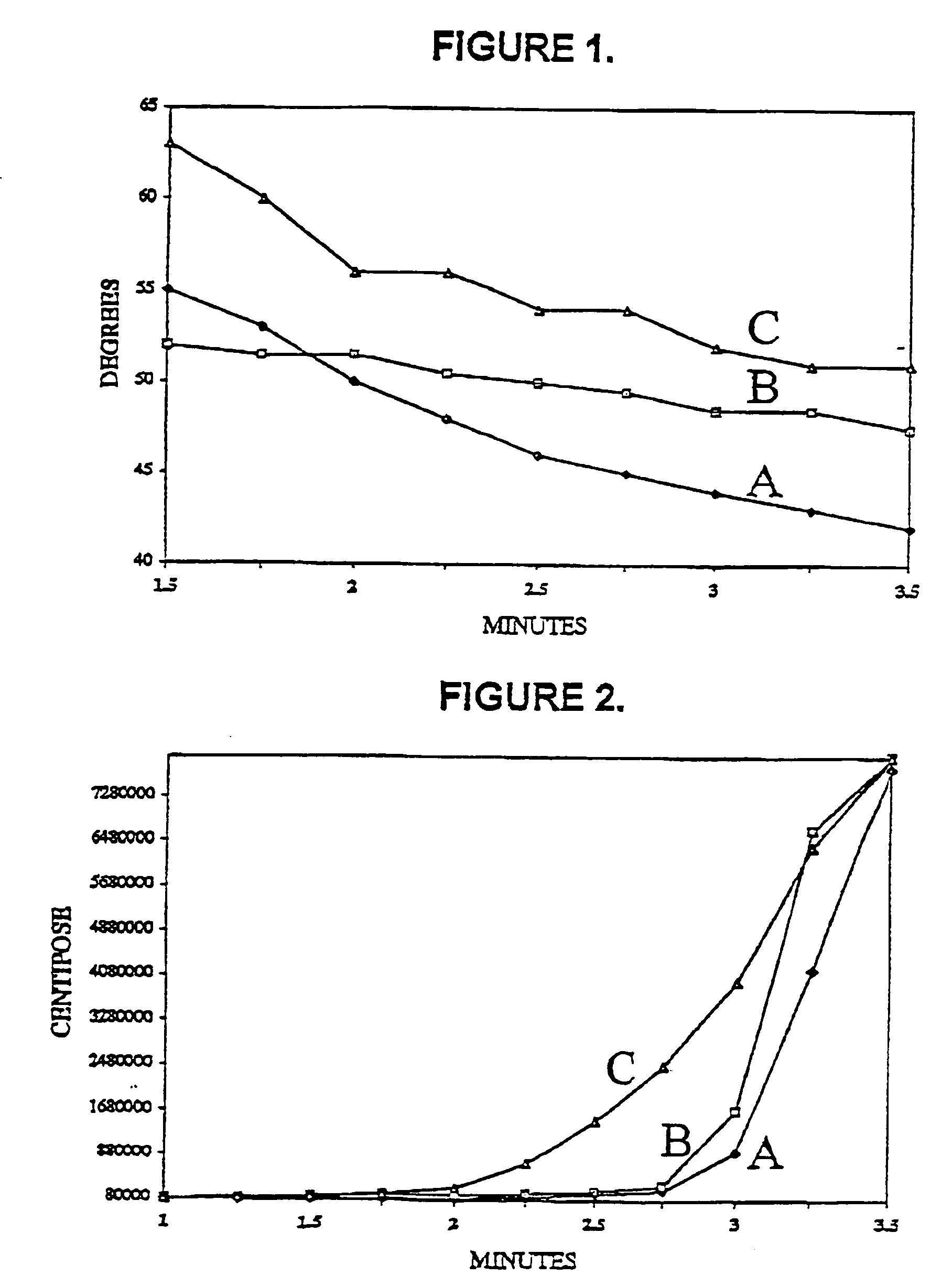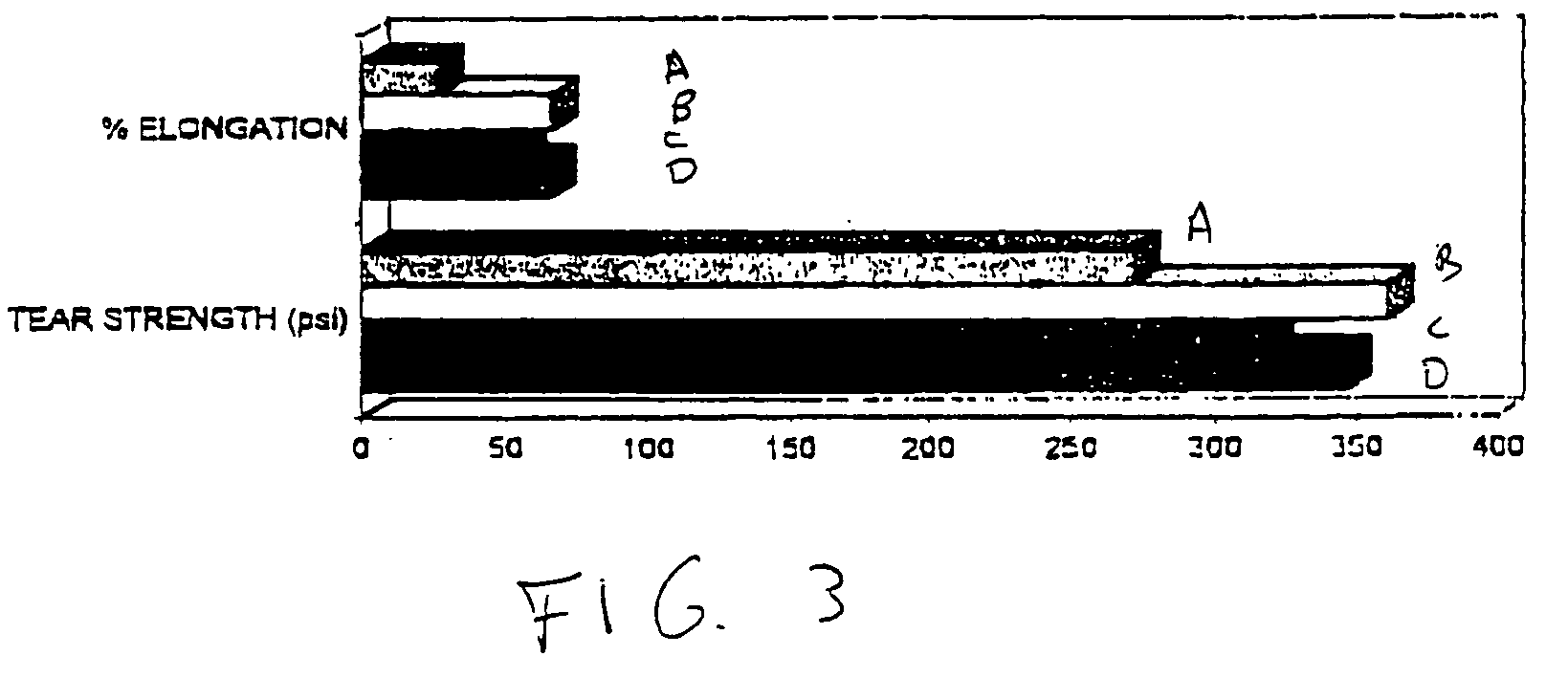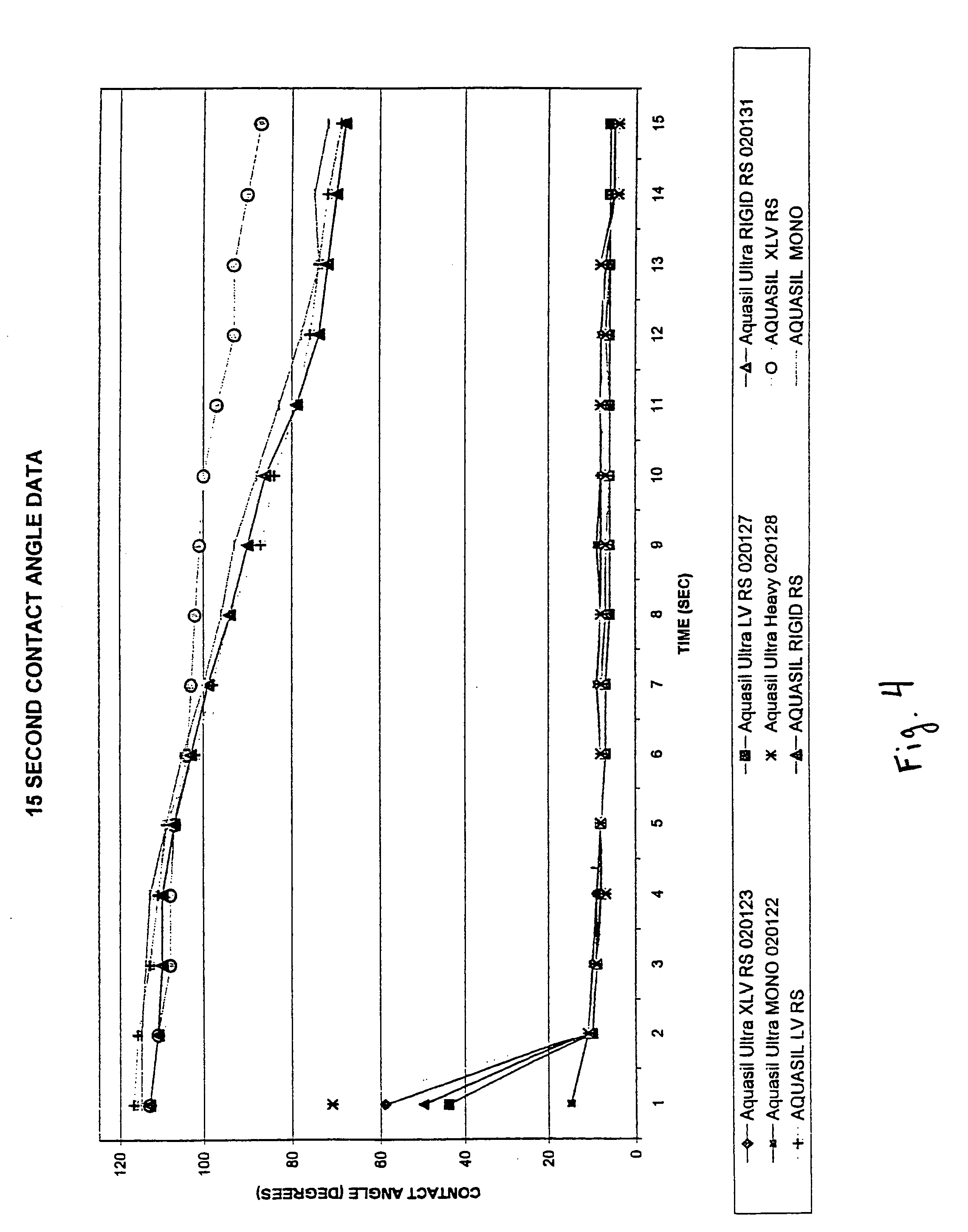Polyorganosiloxane dental impression materials with improved wetting and stability
a technology of polyorganosiloxane and dental impression, applied in dental prosthetics, dental impression caps, dentistry, etc., can solve the problems of low tear strength, number of difficulties, and insufficient improvement,
- Summary
- Abstract
- Description
- Claims
- Application Information
AI Technical Summary
Problems solved by technology
Method used
Image
Examples
example 1
[0057] The two component composition of the invention is formulated in a Base Paste and Catalyst Paste components. Mixing of each component's ingredients is done in a double planetary mixer having a mixing pot heated with circulating water at 45.degree. C.-50.degree. C. and under 65 mm mercury vacuum.
Base Paste Component
[0058] In making the Base Paste, the mixing pot is first charged with all organohydrogen polysiloxane and incrementally thereafter, with QM dispersion and filler component, with mixing continuing until a uniform mixture is achieved. The finished Base Paste is discharged into a storage container.
Catalyst Paste Component
[0059] The Catalyst Paste component is formulated and mixed under conditions and in equipment as described above. The platinum catalyst, 1,3 divinyldimethyldisiloxane, QM resin dispersions, fillers and pigments are added incrementally to the mixing pot and mixing carried out until a uniformly mixed mass is achieved. The compounded Catalyst Paste i...
example 2
[0061] A two component composition of the invention is made by first making a Base Paste and then a Catalyst Paste as described in Example 1, having the composition indicated in the table below.
BASE CATALYSTOrganohydrogen Polysiloxane9.000.00(5000-7000 cps) QM resin dispersion20.1831.71(45000-60000 cps) QM resin dispersion35.6135.23Cristobalite19.7420.67Diatomaceious earth4.304.28Cab-O-Sil TS-5306.456.42Pigments Predispersed in Divinyl Polysiloxane0.650.25Titanium Oxide Pigment0.070.07Surfactant (Igepal CO-530)4.000.00Plasticizer0.000.50Platinum Catalyst0.000.641,3-Divinyldimethyidisiloxane0.000.07Finely divided Platinum metal0.000.16on Calcium Carbonate100.00100.00
example 3
[0062] A two component composition of the invention is made by first making a Base Paste and then a Catalyst Paste as described in Example 1, having the composition indicated in the table below.
BASE CATALYSTOrganohydrogen Polysiloxane10.000.00(5000-7000 cps) QM resin dispersion14.7326.91(45000-60000 cps) QM resin dispersion43.8043.80Cristobalite17.0017.40Diatomaceious earth5.005.00Cab-O-Sil TS-5305.005.00Pigments Predispersed in Divinyl Polysiloxane0.400.50Titanium Oxide Pigment0.070.07Surfactant (Igepal CO-530)4.000.00Plasticizer0.000.50Platinum Catalyst0.000.651,3-Divinyldimethyidisiloxane0.000.07Finely divided Platinum metal0.000.01on Calcium Carbonate100.00100.00
PUM
| Property | Measurement | Unit |
|---|---|---|
| surface contact angle | aaaaa | aaaaa |
| water contact angle | aaaaa | aaaaa |
| surface contact angle | aaaaa | aaaaa |
Abstract
Description
Claims
Application Information
 Login to View More
Login to View More - R&D
- Intellectual Property
- Life Sciences
- Materials
- Tech Scout
- Unparalleled Data Quality
- Higher Quality Content
- 60% Fewer Hallucinations
Browse by: Latest US Patents, China's latest patents, Technical Efficacy Thesaurus, Application Domain, Technology Topic, Popular Technical Reports.
© 2025 PatSnap. All rights reserved.Legal|Privacy policy|Modern Slavery Act Transparency Statement|Sitemap|About US| Contact US: help@patsnap.com



